Technical Doing Something Over and Over Again
Your Company Keeps Doing the Aforementioned Thing Over And Over Again, And It Doesn't Piece of work, and Here's Why
Why most organizational transformation efforts are more than or less the same — and why most of them neglect.
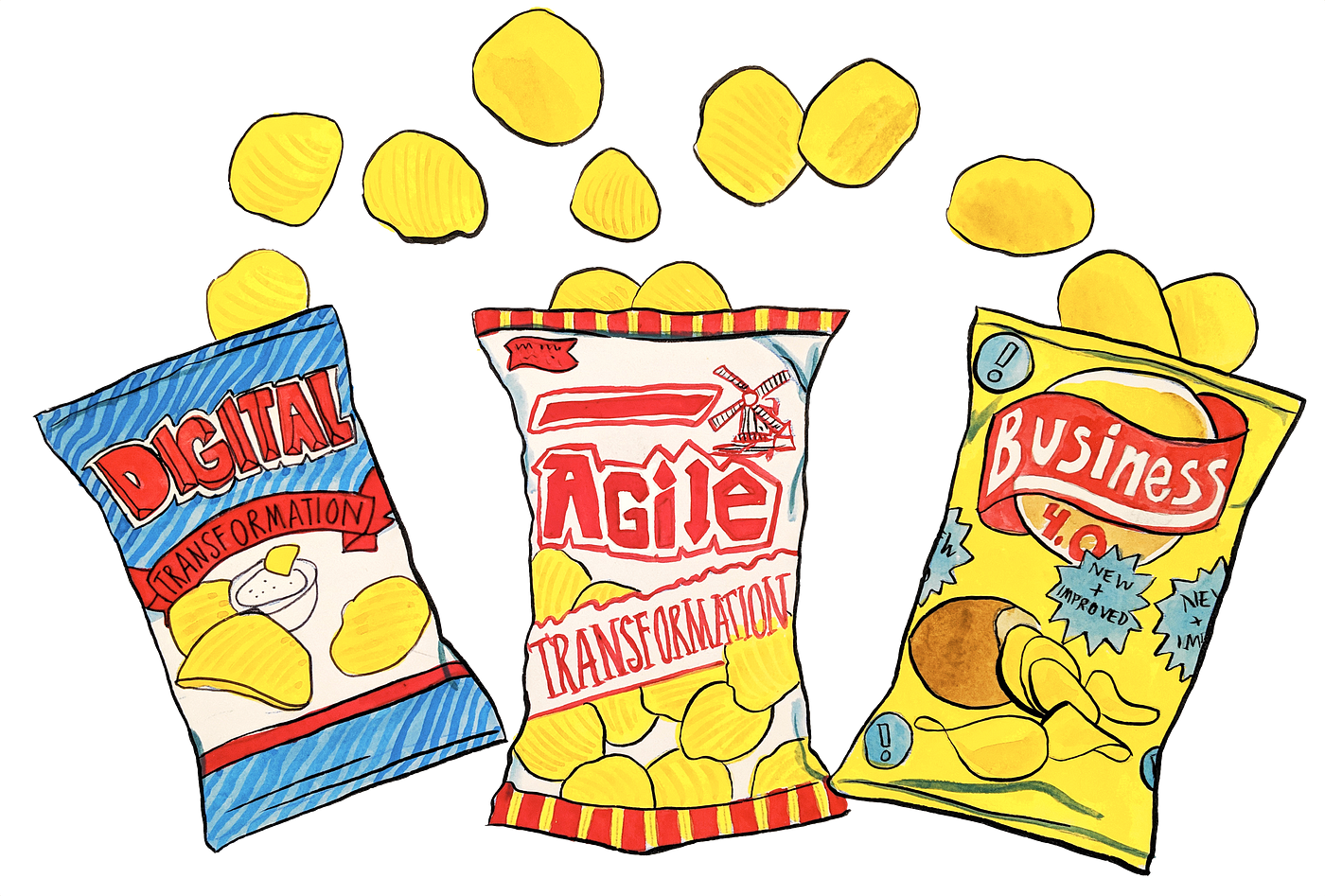
This is a modified transcript of a talk I delivered at O'Reilly Radar 2018 . It speaks to many of the concepts I describe at more length in my new book Agile for Everybody , and to the work I do with my partners at Sudden Compass . The general shape of this talk tin can be summarized every bit follows:
- Almost organizational transformation paradigms, from "digital transformation" to "Agile transformation" to "Design Thinking transformation," are mostly the same.
- These paradigms share iii fundamental principles: kickoff with your customers, collaborate across functions and silos, and program for doubtfulness.
- Organizations fail to put these principles into practice because they approach transformation as something they can purchase, not something they must practice. Thus, the wheel of failed "transformation" continues, and business organisation as usual goes largely unchanged and unchallenged.

Today, I desire to talk near organizational transformation. Organizational transformations are kind of like spud chips — in that location are many flavors to choose from, and they normally seem like a good idea at the fourth dimension, but you rarely feel good about them later.
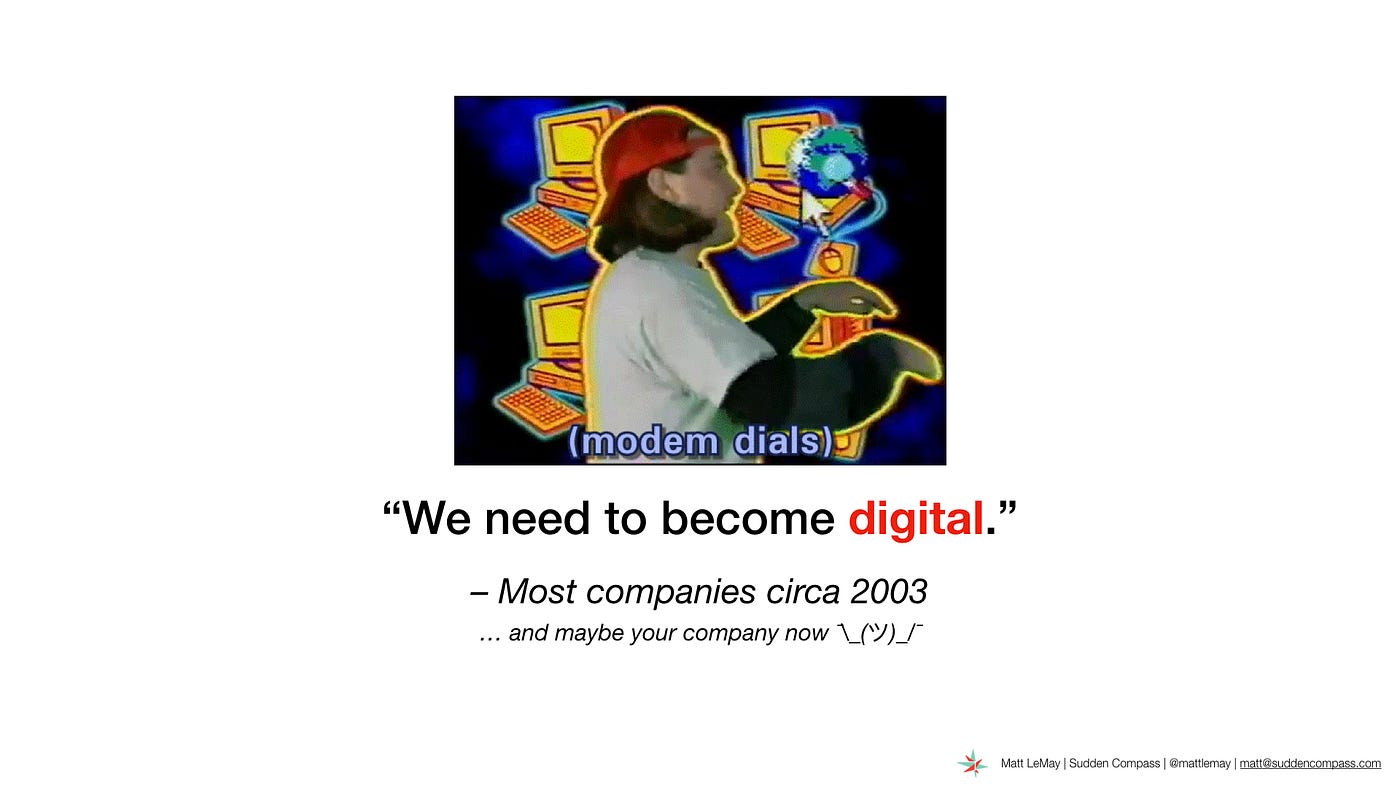
One of the first flavors of transformation I encountered was digital transformation. This started nigh fifteen years ago, and I'm nevertheless hearing about information technology today, even though the word "digital" in this context feels profoundly dated — and probably makes zero sense from your customer's point of view.

Companies want to exist "digital" — but in many cases, they have literally no thought what that means. They throw around words like "disruption" and "innovation," but they're not really sure what their specific goals are — or what about their existing practices they need to "transform" in the get-go place. And then they start by doing something they already know how to do quite well— buying stuff. They upgrade their CRM system. Perchance they invest in some fancy new data architecture. If they're really committed to this "digital" thing, they hire a "Chief Digital Officer" from one of those big fancy tech companies.
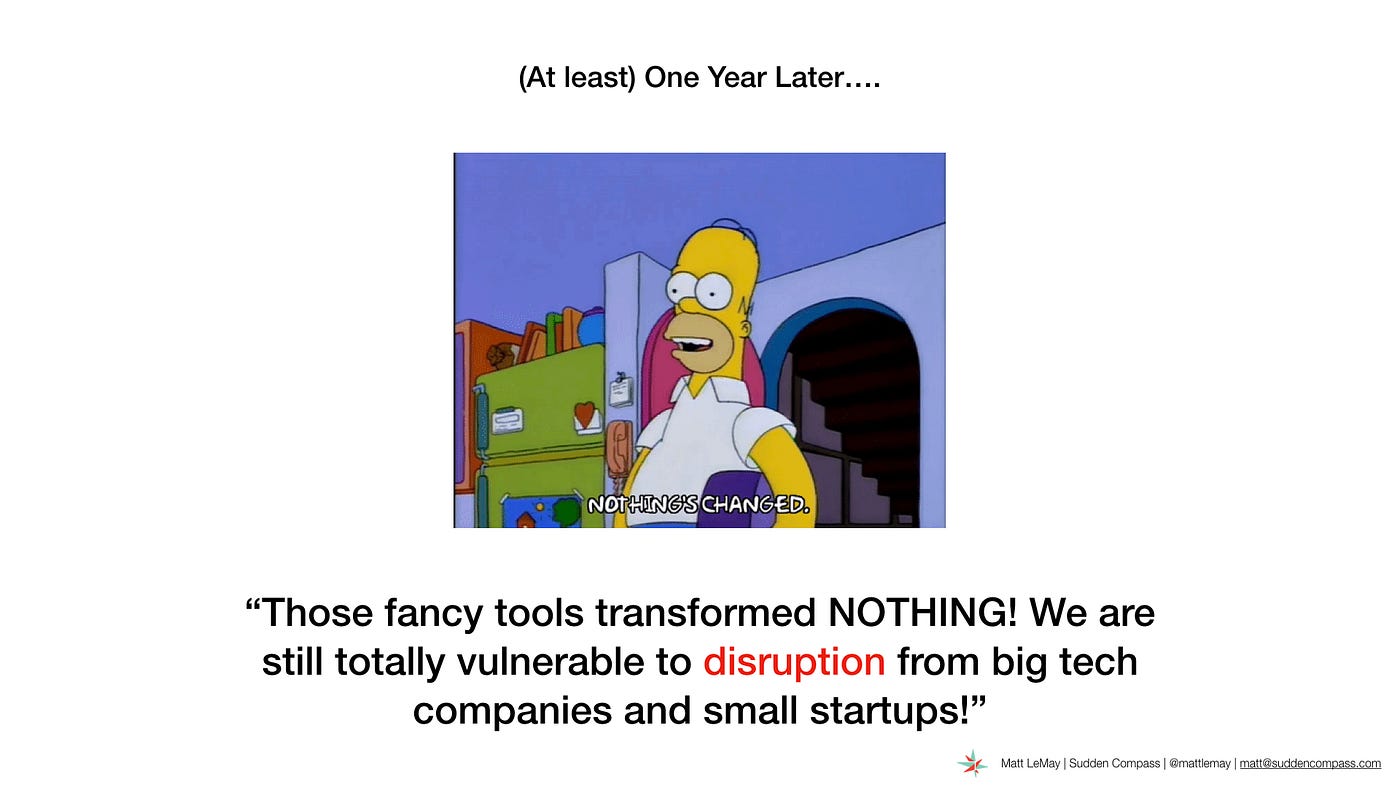
…. But a year or so later, zero has really inverse. People are struggling to learn the new CRM arrangement, and migrating to that fancy new data architecture has proved slower and costlier than anybody predictable. That new Master Digital Officer talks a big game about "cross-functional collaboration," but seems more interested in consolidating power than in breaking down silos. Those aforementioned cryptic concerns that created the perceived need for a "digital transformation" are withal in that location — only the organisation is now another year behind.
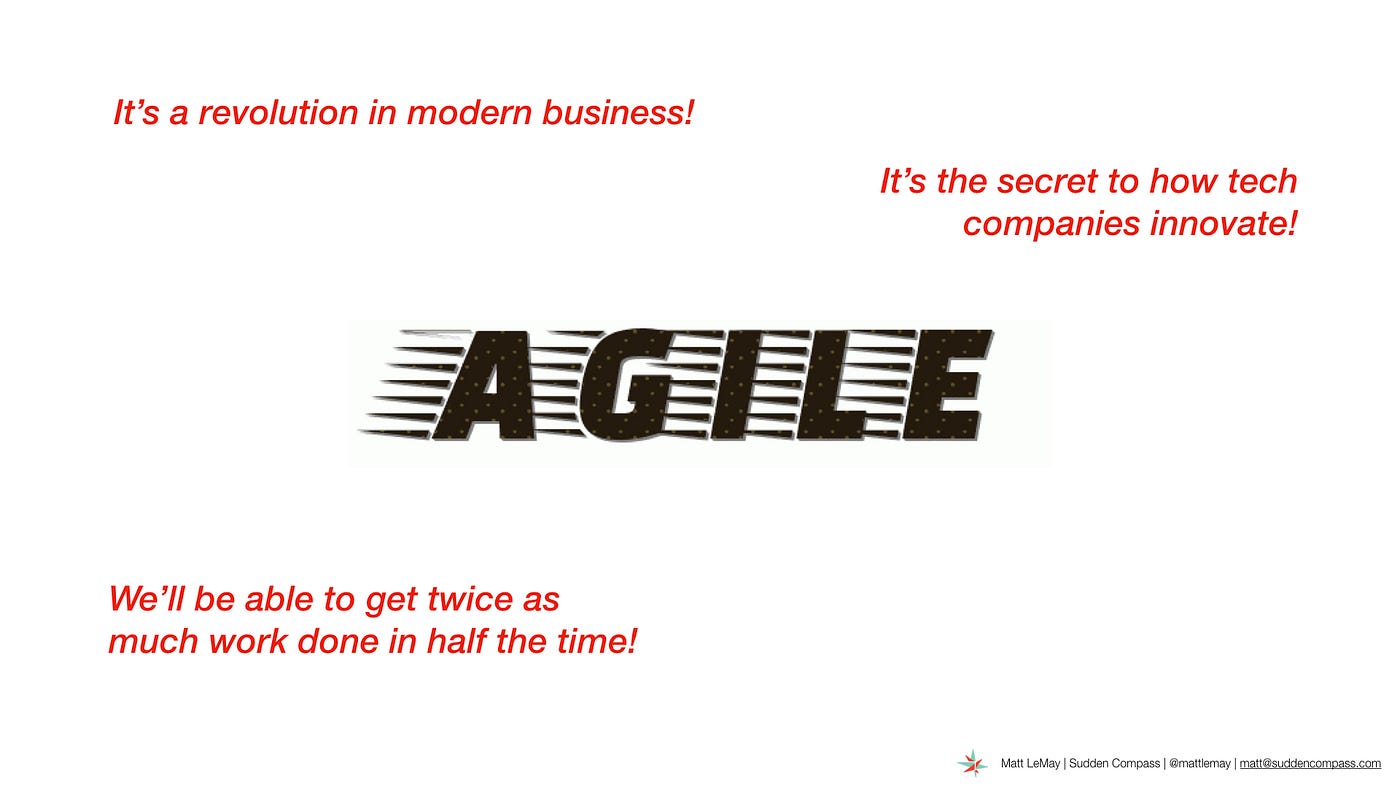
And and then somebody hears most Active. Agile sounds fancy. It sounds skilful. And if you oasis't heard — information technology's the secret to how those fancy tech companies create innovation after innovation! Clearly, this is what went incorrect with that "digital transformation" — it wasn't Agile enough!
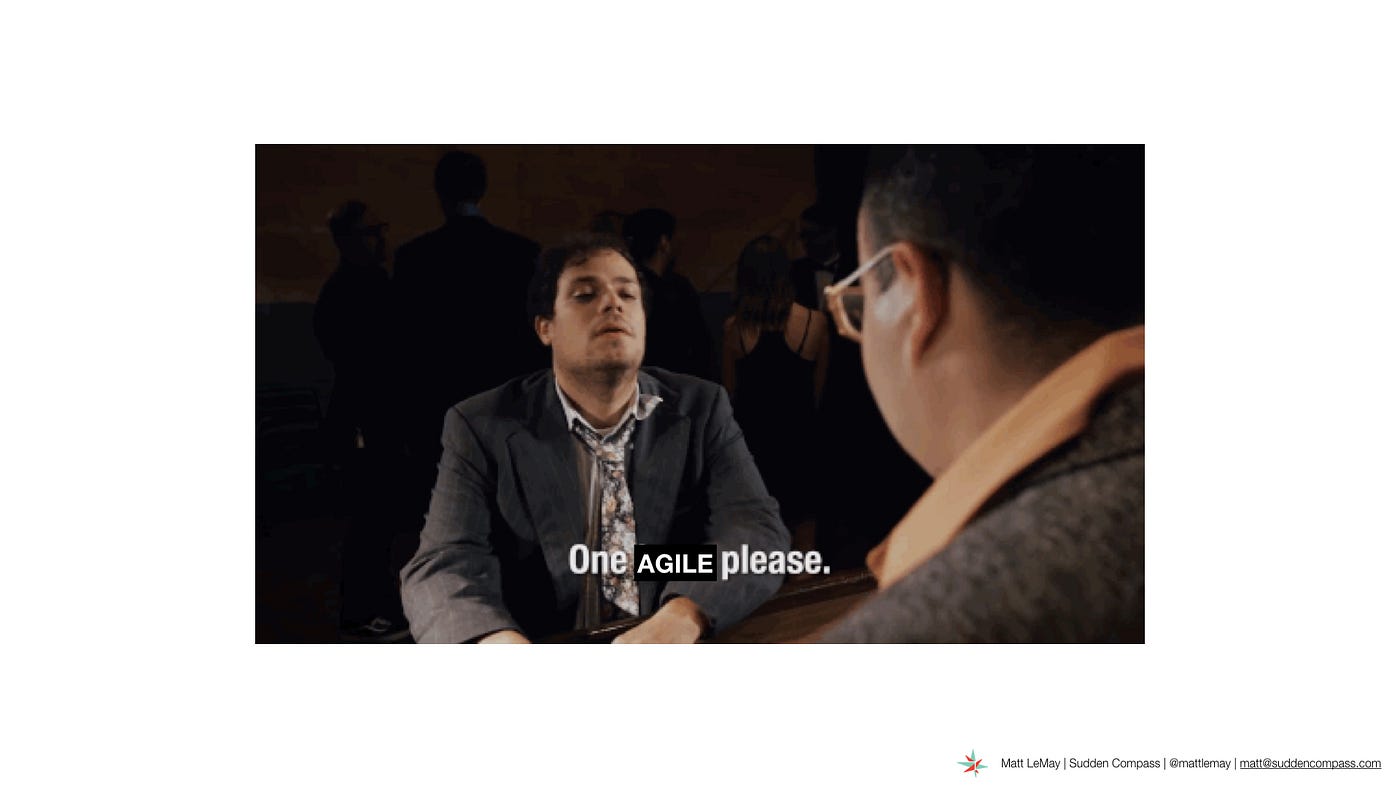
And so, a minor regular army of "Agile consultants" is hired. These consultants arrive fully equipped with a three-to-5-letter of the alphabet framework and piles of documents, manuals, and diagrams. They say "iterate" a lot. They clinch yous that they've seen information technology all, and they know exactly what your arrangement needs to do in order to compete with those big "all-time-in-class" tech companies.
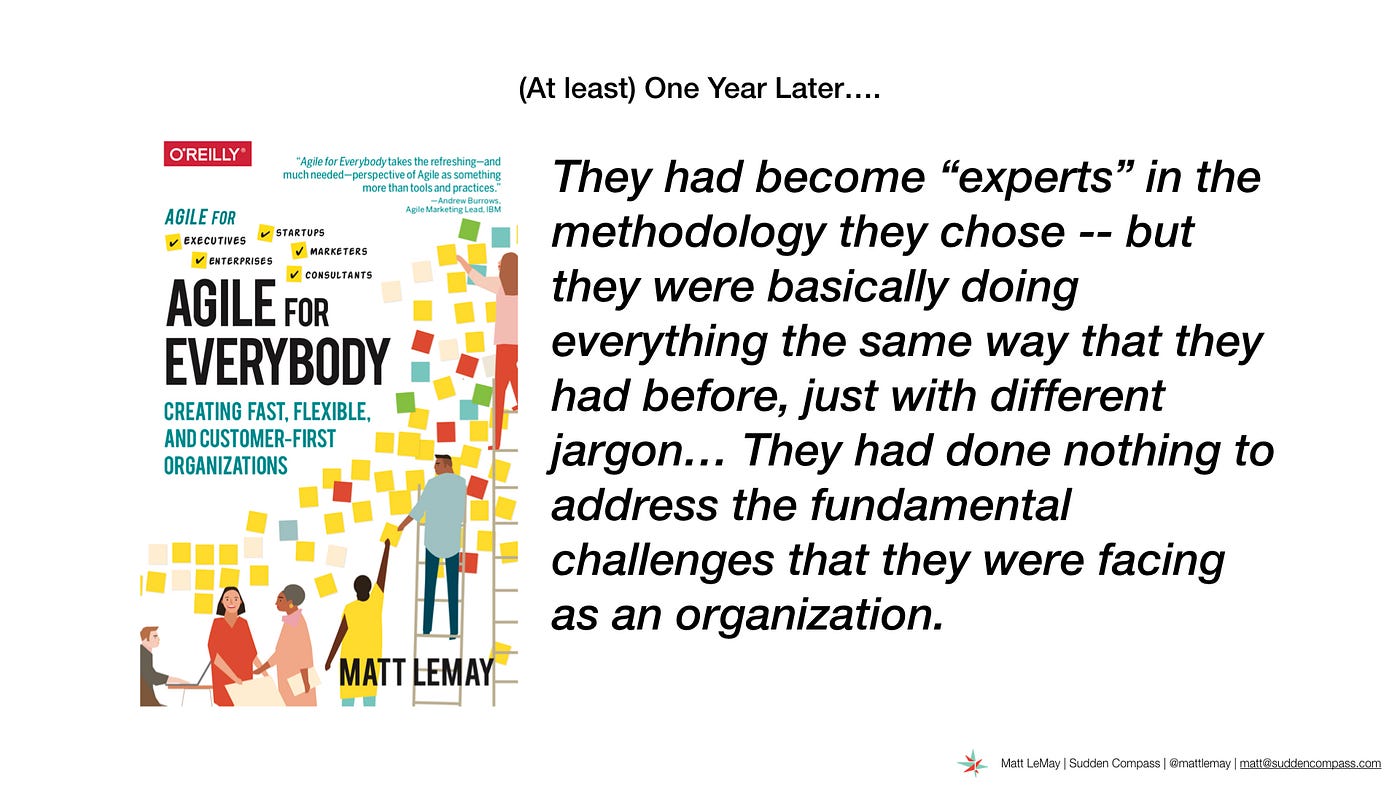
…. A year or so later, everybody is talking like those Agile consultants. Doubters and skeptics are defendant of clinging to "waterfall" ways of working that stifle innovation. People accept learned the rules of an Agile framework, and are post-obit those rules to the letter. And withal, beneath that jargon, not all that much has actually changed. Mirroring a state of affairs that one Agile charabanc described to me in Agile for Everybody, the arrangement is even so having exhausting and pointless meetings, simply those meetings have been given fancy new names. I've seen many cases where companies withal brand rigid and inflexible years-long product plans, just then cram those plans into the "excess" prescribed by their called Agile framework, in effect post-obit the letter of the law while willfully ignoring its intent.
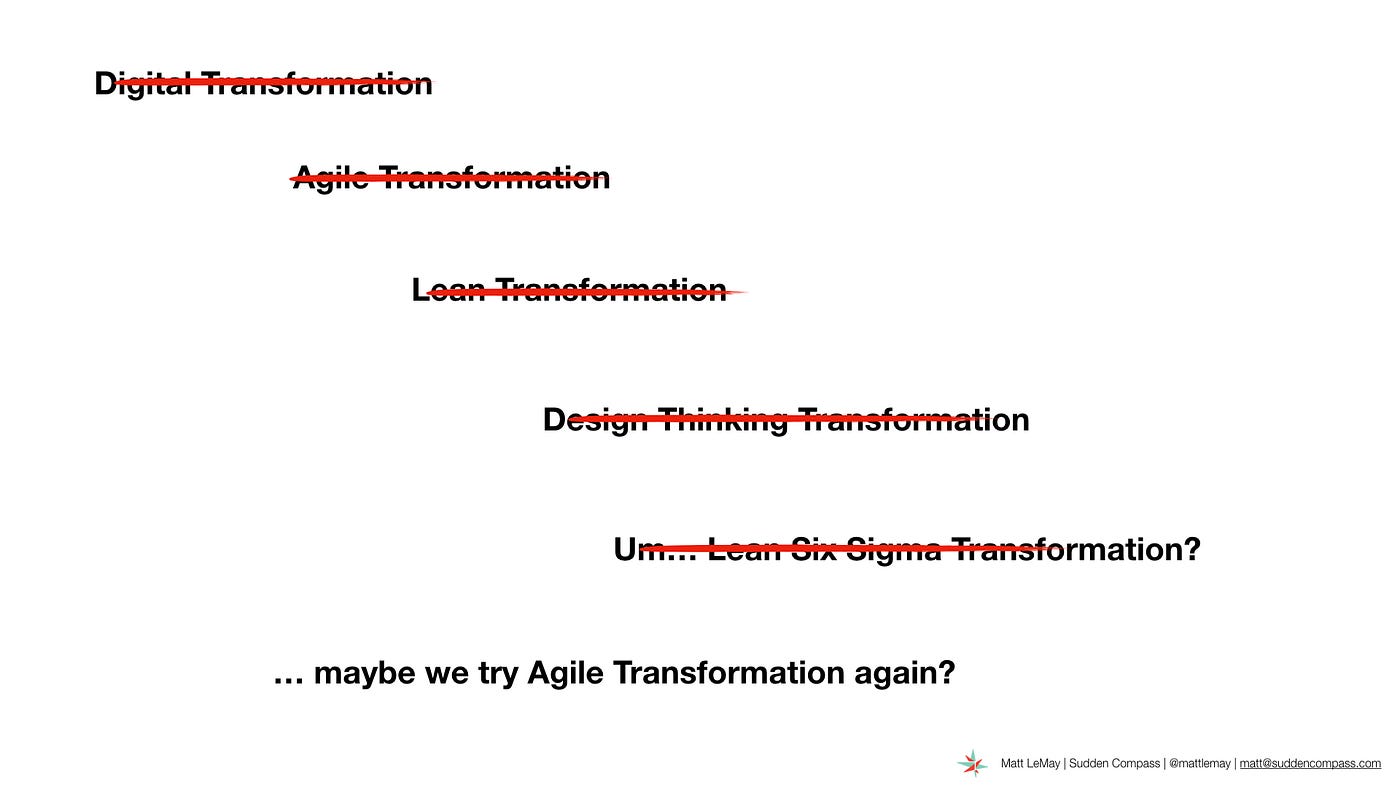
Somewhen, the gap between theory and practice becomes too vast to ignore. This "Agile transformation" is declared a failure — in many cases, juuuuuuust as those Active consultants are moving on to the next company. And then, just in the nick of time, somebody hears well-nigh Lean Startup, or Design Thinking, or some new affair that somebody is going to ask me about next month. This, finally, is what was missing — that whole "Agile transformation" thing was only besides operationally focused, and didn't give people the creative tools they really need to call back like innovators and entrepreneurs!
… and so it goes, time and time again. I've seen some companies go through 3 to 5 of these "transformations" in but a handful of years. Each new transformation paradigm promises to address the shortcomings of the last, and each one ultimately fails to deliver meaningful and substantive alter. Years pass, and business concern as usual continues largely unchanged and unchallenged.
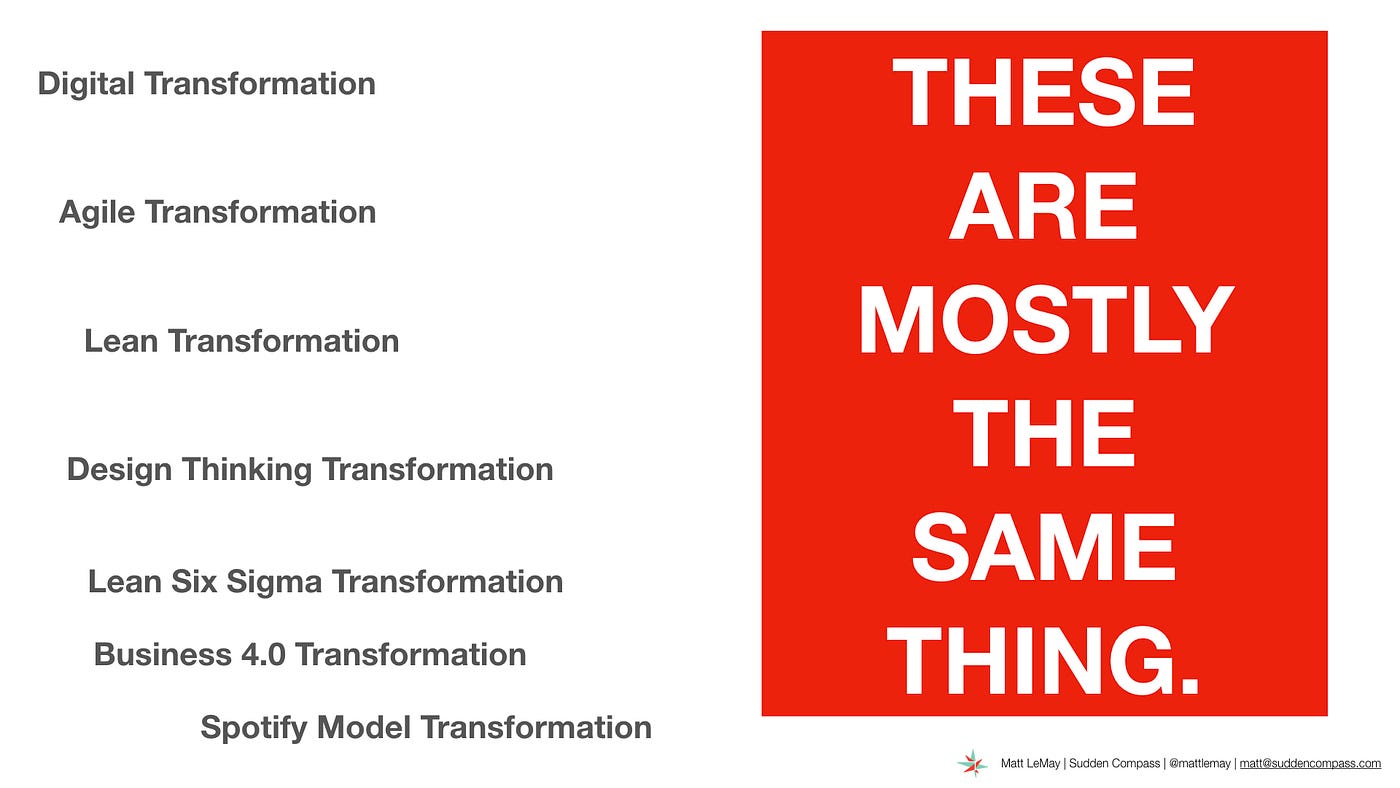
I've seen many organizations and consultants take a Goldilocks-like approach, trying to find the one transformation paradigm that will be "just right" for a given squad or arrangement. Just I've rarely, if always, seen this turn out well. If an organization tin't brand meaningful change when starting with one set of ideas, it's easier — but ultimately much less productive — to arraign those ideas, rather than to accept a long, hard look at the organization itself. And also, nearly all of those organizational transformation paradigms, from the classic "digital transformation" to newer ideas similar "Business four.0" or "the Spotify Model," are mostly the same thing.
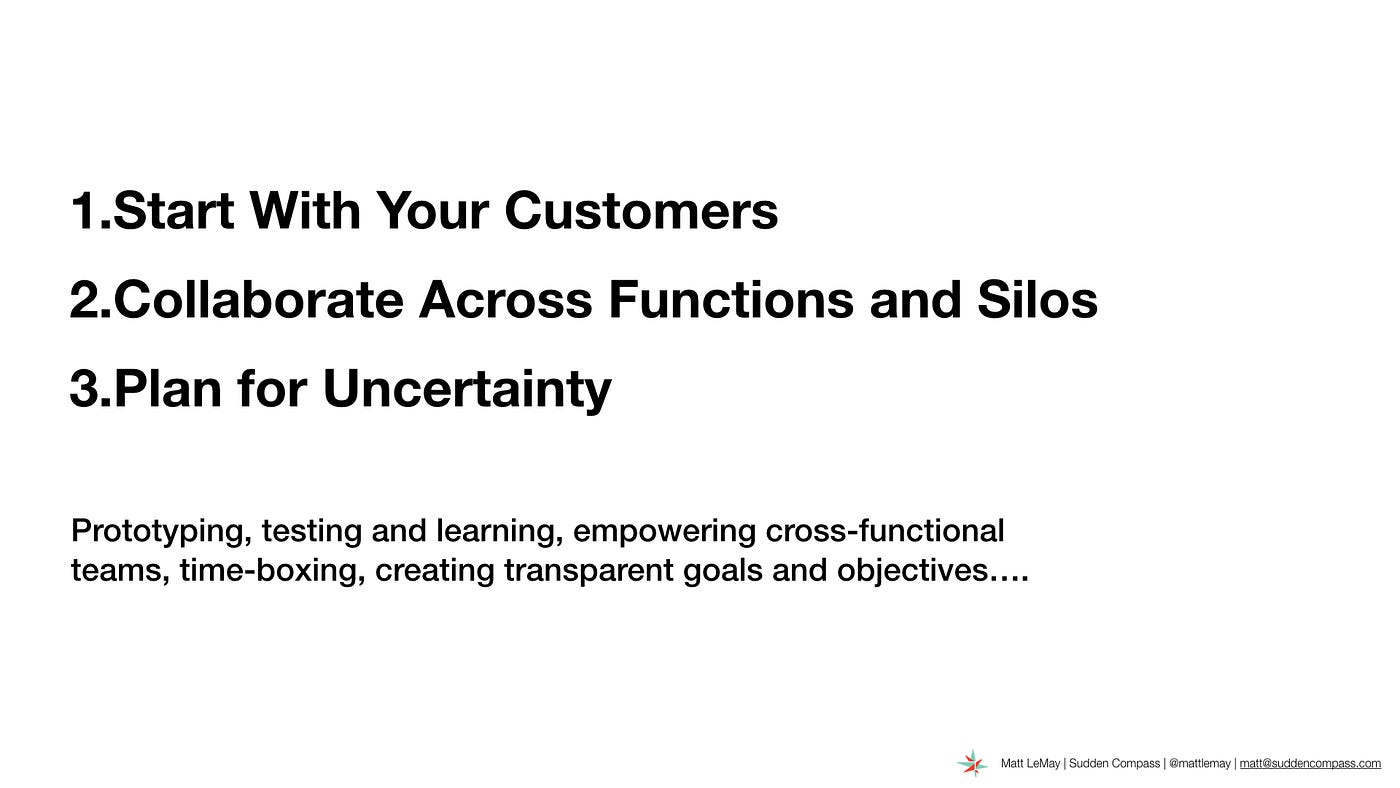
When I gear up virtually researching Agile for Everybody, I was expecting to see heated debates about the finer distinctions between Agile, Lean, and Blueprint Thinking paradigms. Instead, I encountered an overwhelming consensus that these paradigms are much more similar than they are different. Not simply do they involve similar tools and tactics (rapid prototyping, customer interviews, working in short iterations), they all revolve around a very like set of guiding principles: start with your customers, collaborate across functions and silos, and plan for uncertainty.
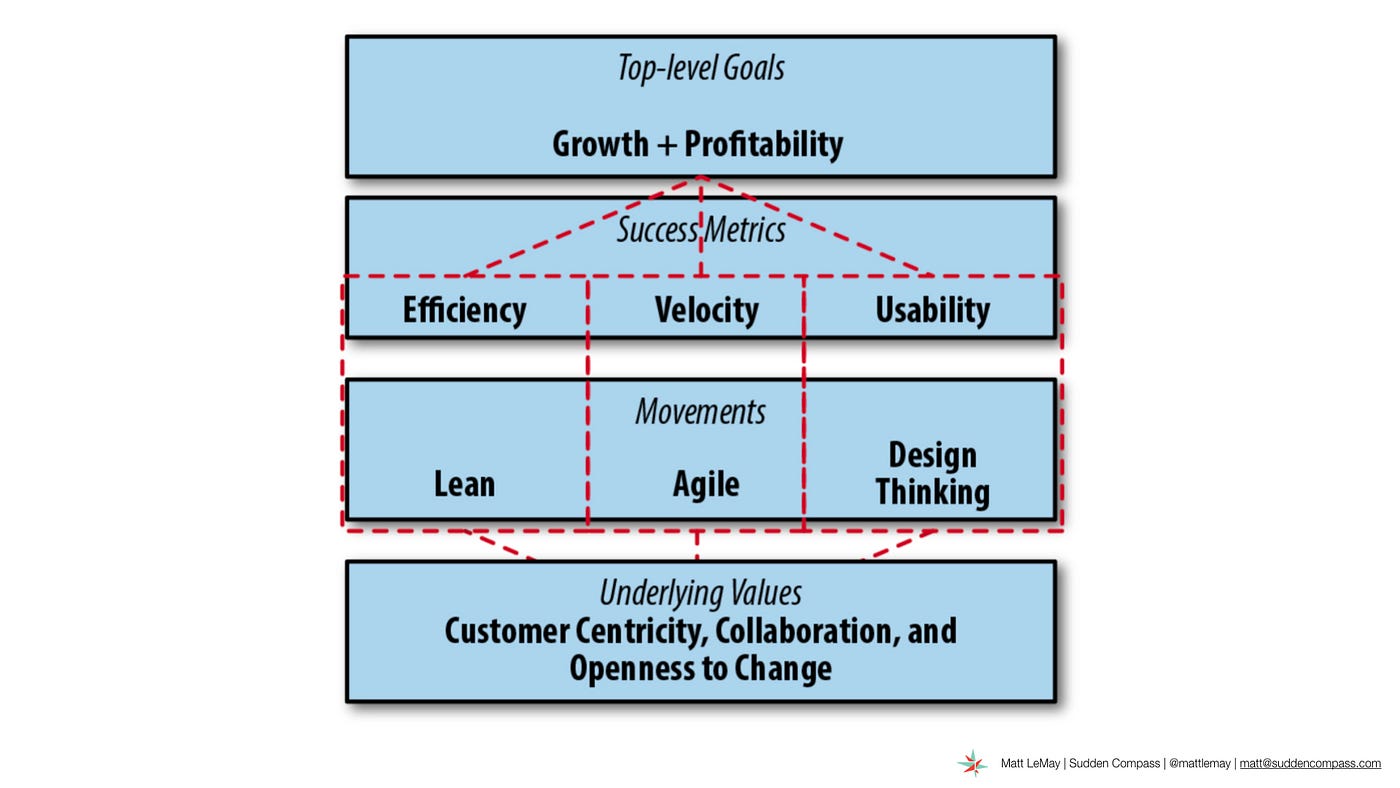
In fact, the procedure of choosing a transformation prototype oftentimes tells you lot more than about the organization making the choice than information technology does about the paradigm they choose. As production researcher Dr. Anna Harrison pointed out to me, organizations who desire to be faster are oft drawn to Agile. Organizations concerned with efficiency are ofttimes drawn to Lean. Organizations who desire to improve usability are often drawn to Design Thinking. Sometimes, it's even simpler than that; organizations whose transformation is driven by Information technology cull Agile, organizations whose transformation is driven by product choose Lean, and organizations whose transformation is driven past design choose Pattern Thinking.

All of this brings us to a big question: if most of these paradigms boil down to the same ideas, and those ideas are expert ones, why practice these transformations continue failing?
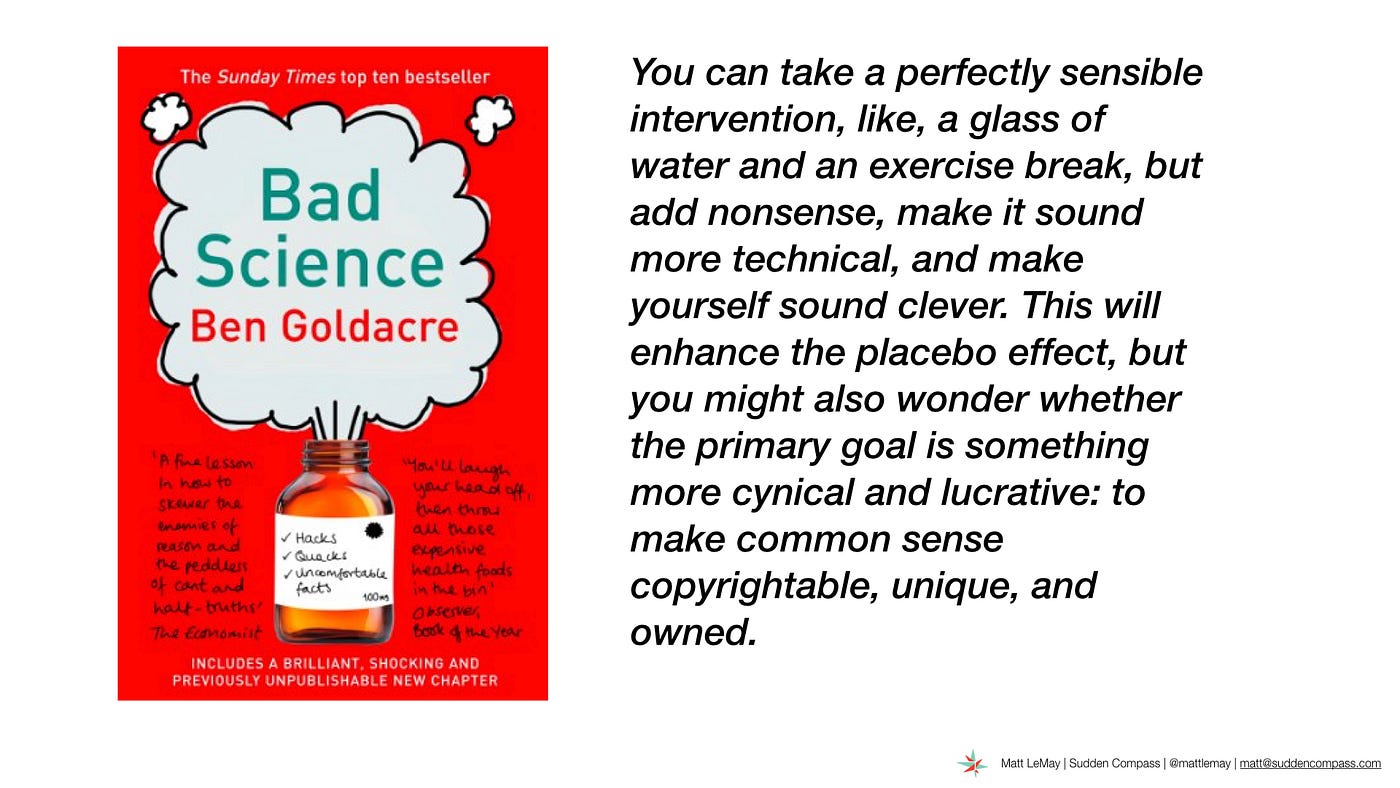
1 clue comes from this splendid book, Bad Scientific discipline. In it, Ben Goldacre describes "the proprietization of common sense"; the practice of taking a fairly straightforward expert thought — similar eating vegetables or drinking water — and dressing it up in simply enough opaque and proprietary nonsense that it can exist, equally Goldacre says, "copyrightable, unique, and owned." Goldacre introduces this concept in the context of personal health and health, but information technology's non difficult to see how it's applicable to organizational transformation also.

Due in part to the proprietization of common sense, in that location is e'er some new "copyrightable, unique, and owned" transformation paradigm for companies to purchase. And this suits well-nigh companies just fine. Because the hard truth of the matter is, while most organizations talk well-nigh "transformation," the actual steps they accept to achieve this brainstorm and end with transactions . Thus, "digital transformation" becomes a pile of expensive software licenses. "Agile transformation" becomes an ever-growing tally of consulting hours. "Pattern Thinking transformation" becomes a series of enjoyable workshops that don't connect with the twenty-four hours-to-twenty-four hour period needs of the business organization. These transactional markers of success provide reliable and low-stakes boxes that can be checked off, offering defensible evidence that something is happening — even if it is only happening superficially.
Of form, the values and principles at the middle of these paradigms will tell you quite plainly that true modify is almost people and culture, not licenses or consultants or workshops. Simply irresolute people and culture is harder to scope, harder to achieve, and harder to measure than adding line items to a upkeep. And, possibly more importantly, those line items can provide the window dressing of organizational change without challenging the existing incentives, behaviors, and expectations that organizational leaders often bewail in theory, just depend upon in practice.

The truth is, if we really want to transform our organizations, we need to offset past agreement what we are transforming from and to in the first place. We need to exist able to ask and answer the one question I've institute nearly important for people who share with me their grand vision for how a particular transformational thought will work: "if you know what your organization should exist doing, and so why aren't you already doing it?" In other words, if you desire to be "digital," why are y'all keeping your technical teams siloed from cadre business concern stakeholders? If you want to be "Lean," why do you accept 50 "senior directors" doing more or less the same chore? And if you want to be "homo-centric," why is nobody in your organisation really talking to customers?
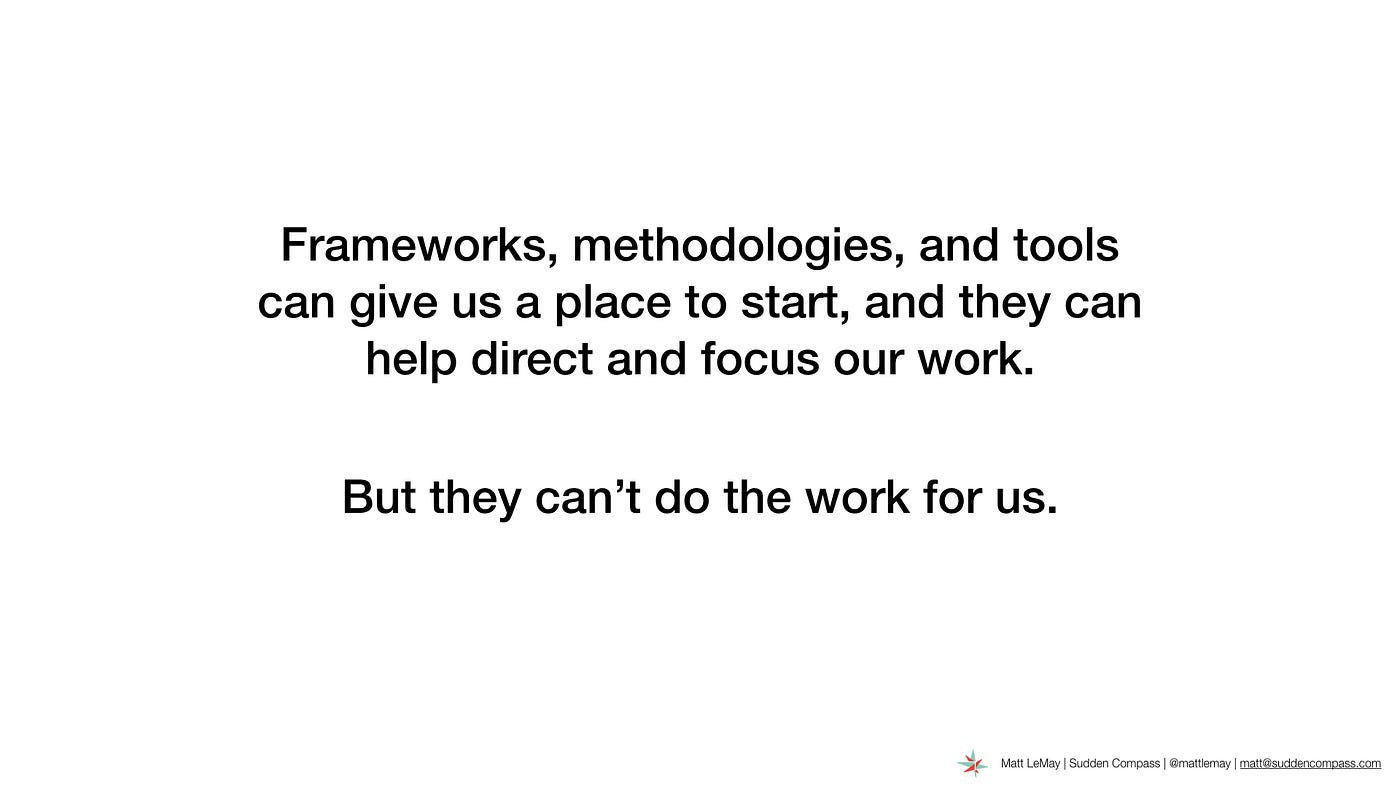
The answer is rarely, if ever, "we haven't bought plenty software licenses or hired enough consultants." Instead, these conversations often reveal the existent-world limitations that eventually scuttle most "by the volume" transformation initiatives. Organizations in highly regulated industries similar banking and pharma, for example, ofttimes believe that legal and governance concerns will make truthful "Agility" impossible — even as they invest heavily in off-the-shelf "Agile transformation" initiatives. Identifying these beliefs and expectations upfront frequently makes it possible to adjust a alter initiative rather than abandoning it altogether.
And therein lies the hardest office; if nosotros truly want to fix our organizations for the future, nosotros must terminate looking for silver bullet solutions that will exercise the hard work for u.s.a.. The loftier-level principles guiding successful organizational change, it turns out, are non all that complicated: showtime with your customers, interact early and oftentimes, and program for uncertainty. Putting these principles into practice requires different tactics for unlike teams and organizations — and requires the discipline to adjust course rather than throwing upward our easily and moving on to the newest flavour.
Thank you!
Source: https://medium.com/on-human-centric-systems/your-company-keeps-doing-the-same-thing-over-and-over-again-and-it-doesnt-work-and-here-s-why-4286f609d311
0 Response to "Technical Doing Something Over and Over Again"
Enviar um comentário